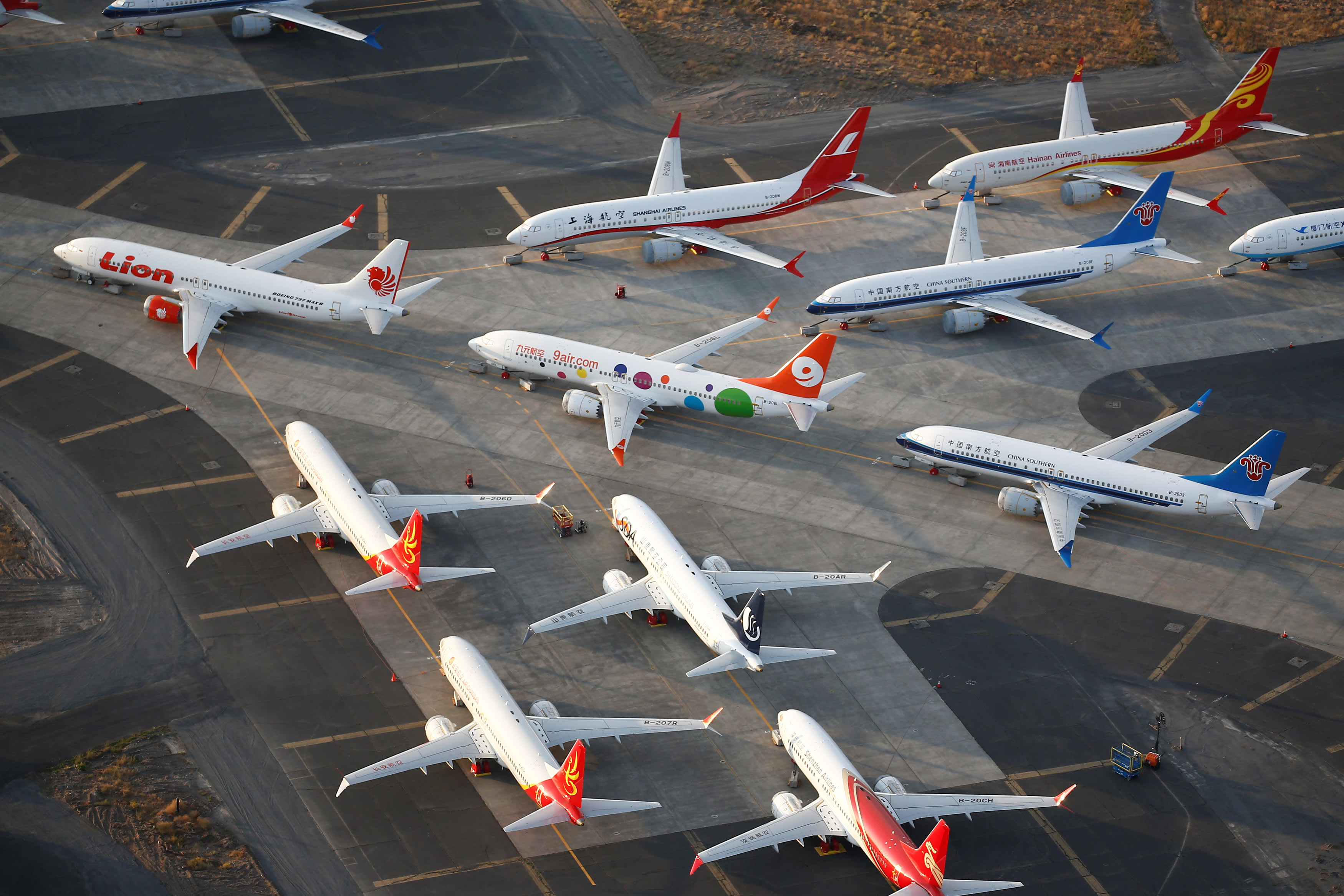Getting the 737 Max flying again will require Boeing to make system less confusing

An aerial photo shows Boeing 737 MAX aircraft at Boeing facilities at the Grant County International Airport in Moses Lake, Washington, September 16, 2019.
Lindsey Wasson | Reuters
As Boeing moves closer to applying for recertification of the 737 Max, it's becoming clear the company has to prove that its redesigned flight system won't confuse pilots when it kicks in.
The National Transportation Safety Board, which investigates plane crashes, said the crews on the 737 Max crashes that killed 346 people didn't handle the final moments of their flights as Boeing and the Federal Aviation Administration expected.
Safety experts believe pilot training will be critical to eliminating any possible confusion in the cockpit. That includes Christopher Hart, former chairman of the National Transportation Safety Board.
"I think it's time to revisit the standards that we use to determine if this automation is interfacing properly with the human," Hart said in an interview.
The company believes pilots won't be confused when the new MCAS anti-stall software kicks in. The software has been redesigned so it won't repeatedly lower the nose of the airplane as pilots are trying to pull up — a feature designed to keep the plane from stalling as it climbs in altitude that investigators said was a contributing factor in the crashes.
"The accident pilot responses to the unintended MCAS operation were not consistent with the underlying assumptions about pilot recognition and response that Boeing used, based on FAA guidance, for flight control system functional hazard assessments, including for MCAS, as part of the 737 MAX design," was one conclusion of the NTSB.
In short, the NTSB concluded that pilots were confused and that may have contributed to their inability to keep their planes from crashing. That's not to say the crashes were due to human error. Investigators in Indonesia and Ethiopia have not released their final reports on the accidents, but initial reports indicate the design of the 737 Max, the repeated engagement of MCAS and the reaction of the pilots were factors in the crashes.
The NTSB report concluded, "neither Boeing's system safety assessment nor its simulator tests evaluated how the combined effect of alerts and indications might impact pilots' recognition of which procedure(s) to prioritize in responding to an unintended MCAS operation caused by an erroneous AOA (angle of attack) input."
In response to the findings, Boeing issued a statement saying, "Safety is a core value for everyone at Boeing and the safety of our airplanes, our customers' passengers and crews is always our top priority. We value the role of the NTSB in promoting aviation safety. We are committed to working with the FAA in reviewing the NTSB recommendations."
Boeing believes computer-based training will ensure pilots are clear about the modifications being made to the Max. But aviation regulators from different countries and regions around the world may require pilots to do additional training in 737 Max simulators.
Hart, who is part of a panel reviewing the FAA certification process, won't say if Max pilots should go through additional simulator training, but he believes the industry needs to rethink how simulators can better prepare pilots to remain calm in emergency situations.
"I think the use of pilots in the engineering simulator has to involve a wide variety of pilots, not just your crack test pilots. It needs to look at different ages too because I think the millennials may respond differently than other ages," he said. "When people are growing up who grew up on computers, they're going to respond very differently than people who didn't grow up on computers."
The head of the FAA, Steve Dickson, has actually been in the 737 Max simulator and has experienced how the plane is designed to operate with the updated MCAS software. Dickson, a former pilot who is certified to fly the 737, has not said publicly what he thinks of the changes to the plane or if pilots will notice them.
Before visiting going in the Max simulator last week, Dickson said: "I will learn what the pilots were dealing with in these scenarios and looking at how the failure modes presented themselves. We need to take a holistic look at the process and not just look at it item by item, make sure we are accounting for the human element."
— CNBC's Meghan Reeder contributed to this report.
Read More
No comments